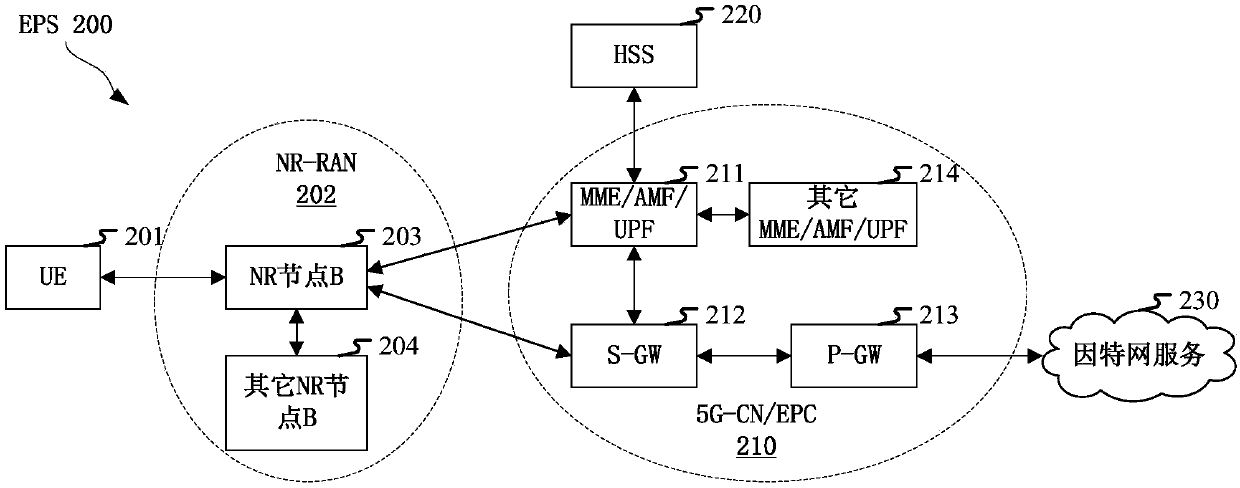Method and DEVICE in user equipment and base station used for wireless communication
A technology of wireless communication and user equipment, which is applied in the field of data and control channel transmission on unlicensed spectrum, and can solve the problems of not knowing whether LBT can pass, and being unable to correctly predict whether PDCCH can be sent.
- Summary
- Abstract
- Description
- Claims
- Application Information
AI Technical Summary
Problems solved by technology
Method used
Image
Examples
Embodiment 1
[0092] Embodiment 1 has illustrated the flowchart of the first sequence, as attached figure 1 shown.
[0093] In Embodiment 1, the user equipment in this application first monitors the first sequence in the first time window; if the first sequence is detected in the first time window, the user equipment then Blind detection for the first signaling is performed on K1 candidate RE sets; the first signaling occupies one candidate RE set in the K1 candidate RE sets in the time-frequency domain, and the K1 candidate RE sets Any one of the candidate RE sets in the RE set includes a positive integer number of REs, and each RE included in any one of the K1 candidate RE sets belongs to the candidate time-frequency resource pool, and the candidate The selected time-frequency resource pool belongs to a second time window in the time domain, the first sequence is used to determine the starting moment of the candidate time-frequency resource pool in the second time window, and the first t...
Embodiment 2
[0122] Embodiment 2 illustrates the schematic diagram of network architecture, as attached figure 2 shown.
[0123] Embodiment 2 illustrates a schematic diagram of a network architecture according to the present application, as attached figure 2 shown. figure 2It is a diagram illustrating NR5G, LTE (Long-Term Evolution, long-term evolution) and LTE-A (Long-Term Evolution Advanced, enhanced long-term evolution) system network architecture 200 . The NR 5G or LTE network architecture 200 may be referred to as an EPS (Evolved Packet System, Evolved Packet System) 200 by some other suitable term. EPS 200 may include one or more UE (User Equipment, user equipment) 201, NG-RAN (next generation radio access network) 202, 5G-CN (5G-Core Network, 5G core network) / EPC (Evolved Packet Core, Evolved Packet Core) 210 , HSS (Home Subscriber Server, Home Subscriber Server) 220 and Internet Service 230 . The EPS may be interconnected with other access networks, but these entities / interf...
Embodiment 3
[0129] Embodiment 3 shows a schematic diagram of an embodiment of a wireless protocol architecture of a user plane and a control plane according to the present application, as shown in the attached image 3 shown.
[0130] attached image 3 is a schematic diagram illustrating an embodiment of a radio protocol architecture for a user plane and a control plane, image 3 The radio protocol architecture for user equipment (UE) and base station equipment (gNB or eNB) is shown in three layers: layer 1, layer 2 and layer 3. Layer 1 (L1 layer) is the lowest layer and implements various PHY (Physical Layer) signal processing functions. The L1 layer will be referred to herein as PHY 301 . Layer 2 (L2 Layer) 305 is above PHY 301 and is responsible for the link between UE and gNB through PHY 301 . In the user plane, the L2 layer 305 includes MAC (Medium Access Control, Media Access Control) sublayer 302, RLC (Radio LinkControl, Radio Link Layer Control Protocol) sublayer 303 and PDCP ...
PUM
 Login to View More
Login to View More Abstract
Description
Claims
Application Information
 Login to View More
Login to View More - R&D Engineer
- R&D Manager
- IP Professional
- Industry Leading Data Capabilities
- Powerful AI technology
- Patent DNA Extraction
Browse by: Latest US Patents, China's latest patents, Technical Efficacy Thesaurus, Application Domain, Technology Topic, Popular Technical Reports.
© 2024 PatSnap. All rights reserved.Legal|Privacy policy|Modern Slavery Act Transparency Statement|Sitemap|About US| Contact US: help@patsnap.com










